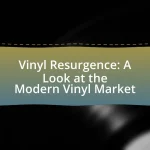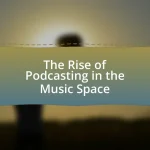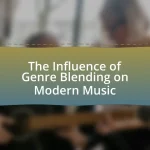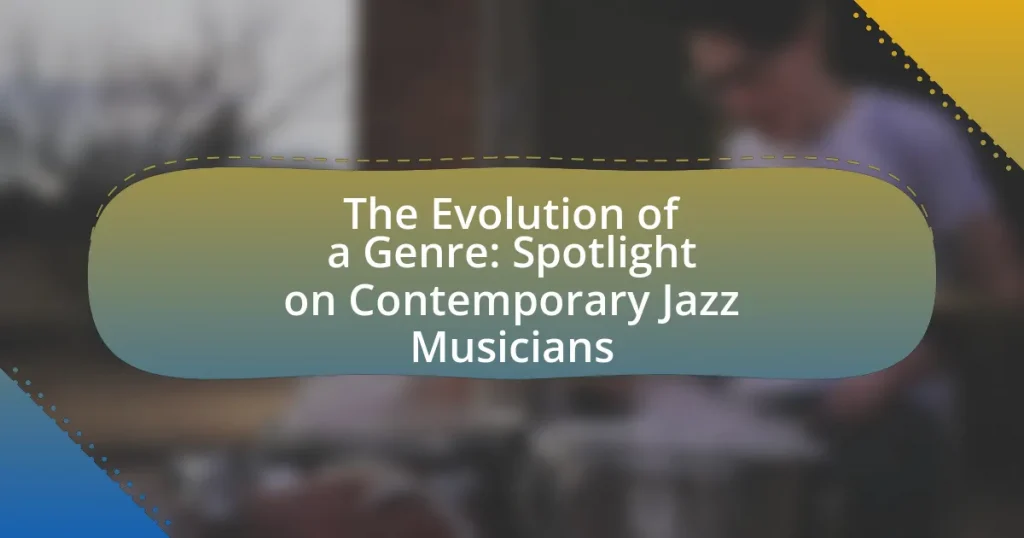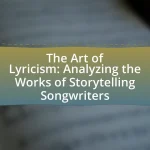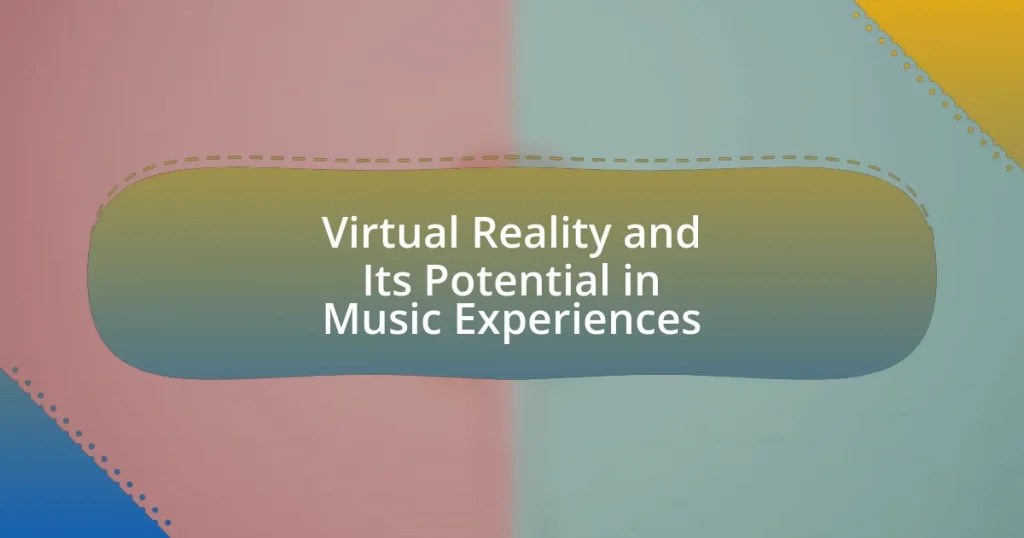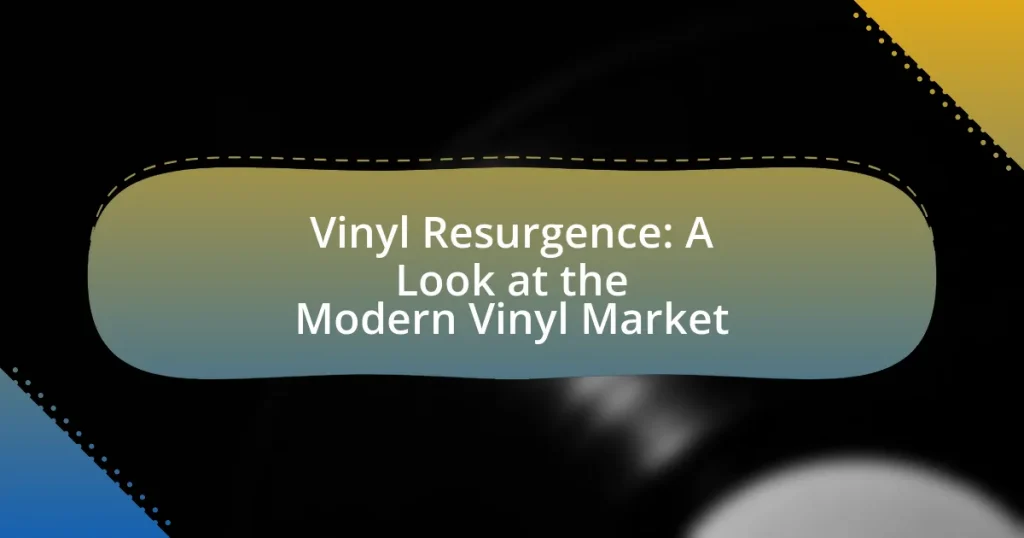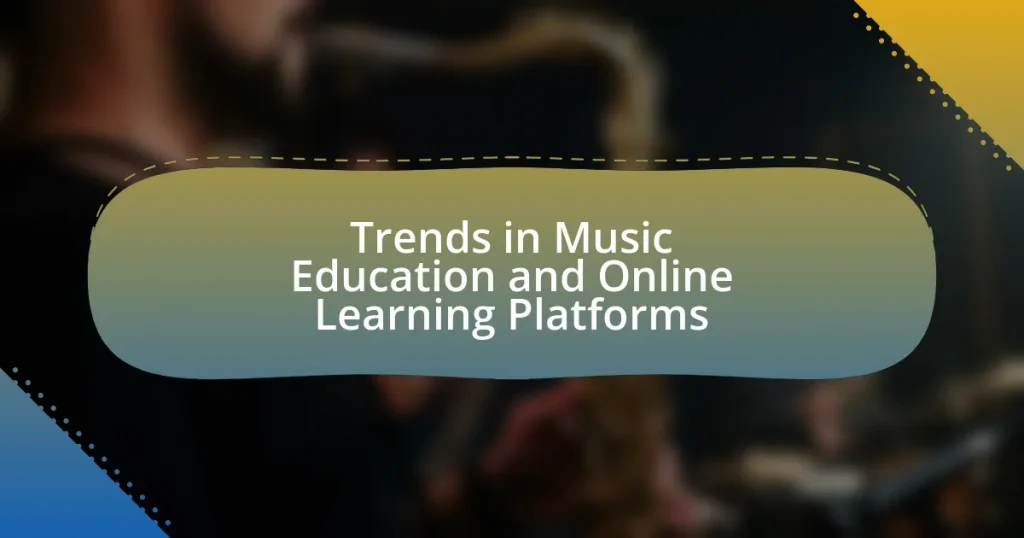The article focuses on the evolution of contemporary jazz, highlighting its transformation from traditional forms to modern expressions influenced by various musical genres such as rock, funk, and electronic music. It examines key historical events that shaped jazz, the changing definition of the genre, and the impact of cultural shifts on its development. Prominent contemporary jazz musicians, including Kamasi Washington and Esperanza Spalding, are discussed for their innovative contributions and signature styles, as well as the role of technology and collaborations in shaping the genre’s future. Emerging styles and trends within contemporary jazz are also explored, emphasizing the importance of adaptability and experimentation for aspiring musicians.
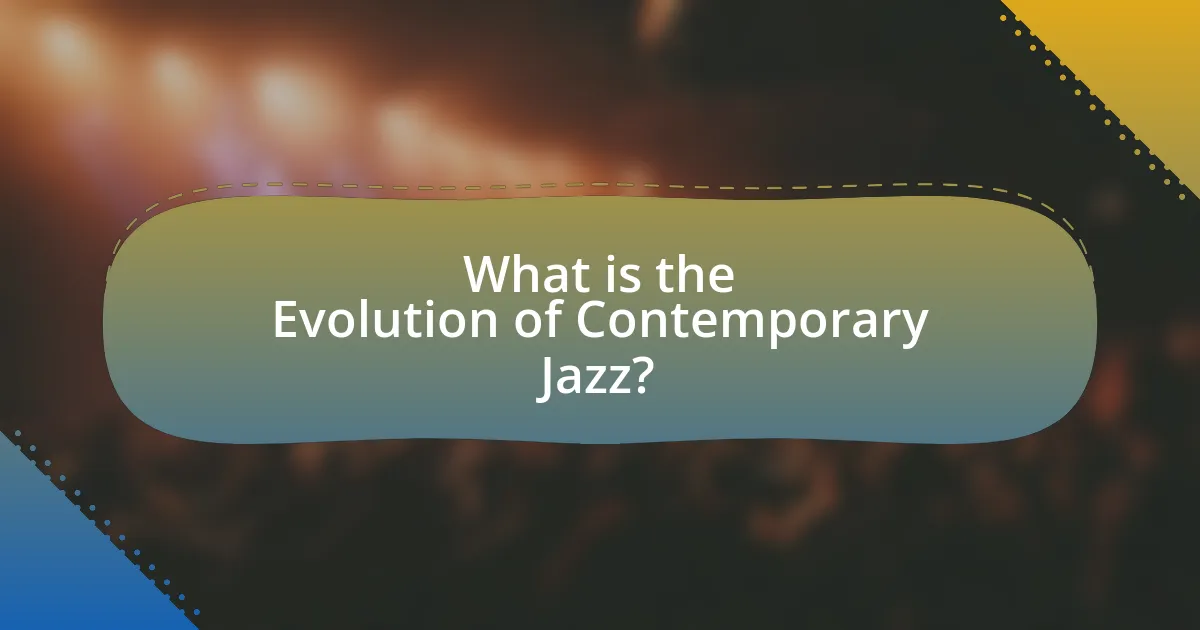
What is the Evolution of Contemporary Jazz?
The evolution of contemporary jazz encompasses the transformation of jazz music from traditional forms to modern expressions, characterized by the integration of diverse musical influences and innovative techniques. Beginning in the mid-20th century, contemporary jazz emerged as artists began to experiment with elements from genres such as rock, funk, and electronic music, leading to the development of subgenres like fusion and smooth jazz. Notable musicians such as Miles Davis and John Coltrane played pivotal roles in this evolution, pushing boundaries with albums like “Bitches Brew” and “A Love Supreme,” which introduced new harmonic structures and improvisational styles. The incorporation of technology, such as synthesizers and digital production, further shaped the sound of contemporary jazz, allowing for greater experimentation and collaboration across genres. This ongoing evolution reflects the genre’s adaptability and its response to cultural and musical trends, solidifying contemporary jazz as a dynamic and ever-changing art form.
How has the definition of jazz changed over time?
The definition of jazz has evolved from its origins in the early 20th century as a blend of African American musical traditions, blues, and ragtime to a more expansive genre that incorporates various styles and influences. Initially characterized by improvisation and swing rhythms, jazz has since embraced elements from rock, funk, hip-hop, and electronic music, leading to subgenres like fusion and smooth jazz. This transformation reflects broader cultural shifts and the genre’s adaptability, as seen in the works of contemporary musicians like Kamasi Washington and Esperanza Spalding, who incorporate diverse musical elements while maintaining jazz’s core improvisational spirit.
What historical events influenced the evolution of jazz?
The evolution of jazz was significantly influenced by several historical events, including the Great Migration, the Harlem Renaissance, and the impact of World War II. The Great Migration (1916-1970) saw a large movement of African Americans from the rural South to urban centers in the North, particularly Chicago and New York, which facilitated the blending of various musical styles and the emergence of jazz as a distinct genre. The Harlem Renaissance (1920s) further enriched jazz by fostering a cultural explosion that celebrated African American art, literature, and music, leading to the rise of iconic figures like Duke Ellington and Louis Armstrong. Additionally, World War II (1939-1945) played a crucial role in popularizing jazz globally, as American soldiers brought the music to Europe, influencing local musicians and leading to the development of new styles such as bebop. These events collectively shaped the trajectory of jazz, making it a dynamic and evolving art form.
How do cultural shifts impact jazz music?
Cultural shifts significantly impact jazz music by influencing its themes, styles, and instrumentation. For instance, the civil rights movement in the 1960s led to the emergence of jazz that incorporated social and political messages, as seen in the works of artists like Max Roach and Charles Mingus. Additionally, the globalization of music has introduced diverse cultural elements into jazz, resulting in hybrid genres such as jazz fusion, which blends traditional jazz with rock, funk, and world music influences. This evolution reflects the changing societal values and artistic expressions, demonstrating how jazz continuously adapts to the cultural landscape.
What are the key characteristics of contemporary jazz?
Contemporary jazz is characterized by its fusion of various musical styles, innovative improvisation, and a focus on individual expression. This genre often incorporates elements from rock, funk, hip-hop, and electronic music, reflecting a diverse range of influences. Additionally, contemporary jazz musicians frequently experiment with complex harmonies and rhythms, pushing the boundaries of traditional jazz forms. The use of technology, such as electronic instruments and digital effects, is also prevalent, enhancing the sound and expanding creative possibilities. These characteristics demonstrate the genre’s evolution and adaptability in the modern music landscape.
How does contemporary jazz differ from traditional jazz?
Contemporary jazz differs from traditional jazz primarily in its incorporation of diverse musical influences and innovative techniques. While traditional jazz is rooted in the early 20th-century styles such as Dixieland and swing, characterized by structured arrangements and improvisation within set frameworks, contemporary jazz embraces a broader range of genres, including funk, rock, and electronic music. This evolution allows contemporary jazz musicians to experiment with unconventional time signatures, harmonies, and instrumentation, leading to a more eclectic sound. For instance, artists like Kamasi Washington and Esperanza Spalding blend jazz with elements of hip-hop and world music, showcasing the genre’s adaptability and relevance in modern music.
What elements define the sound of contemporary jazz musicians?
Contemporary jazz musicians are defined by elements such as improvisation, fusion of genres, complex harmonies, and rhythmic diversity. Improvisation remains a core aspect, allowing musicians to express individuality and spontaneity during performances. The fusion of genres, including influences from rock, hip-hop, and electronic music, broadens the sound palette and attracts diverse audiences. Complex harmonies, often incorporating extended chords and modal interchange, create rich textures that challenge traditional jazz structures. Additionally, rhythmic diversity, characterized by the use of polyrhythms and syncopation, enhances the dynamic quality of contemporary jazz. These elements collectively contribute to the innovative and evolving nature of the genre.
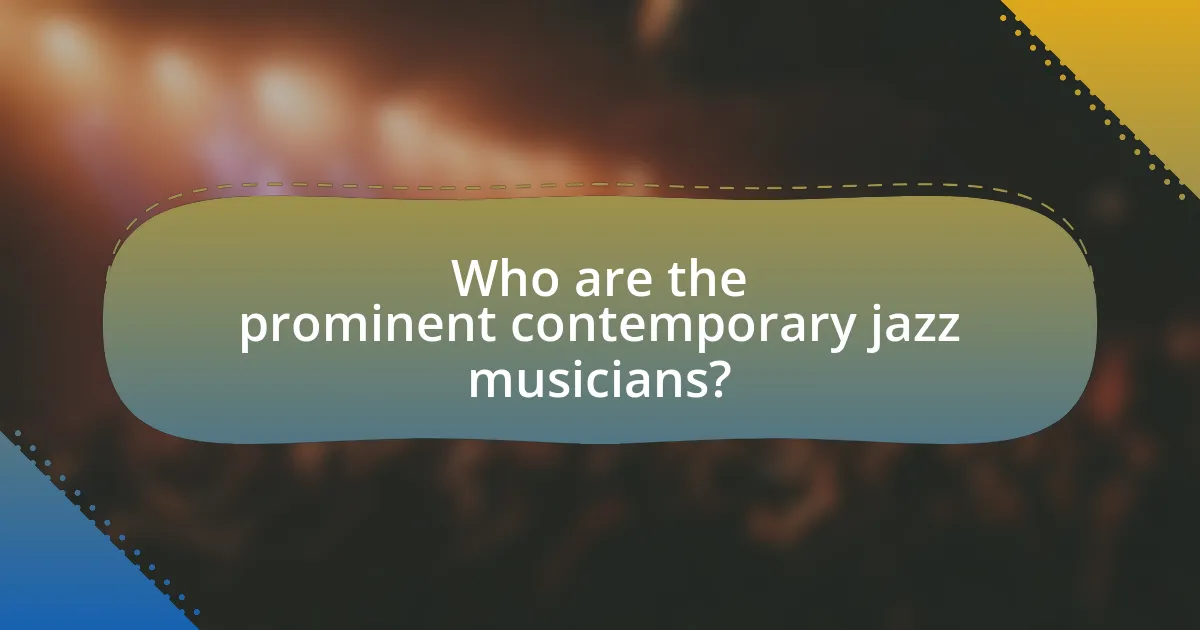
Who are the prominent contemporary jazz musicians?
Prominent contemporary jazz musicians include Kamasi Washington, Esperanza Spalding, Robert Glasper, and Christian Scott aTunde Adjuah. Kamasi Washington is known for his expansive compositions and innovative approach to jazz, as evidenced by his critically acclaimed album “The Epic.” Esperanza Spalding has gained recognition for her unique blend of jazz with other genres, winning multiple Grammy Awards, including Best New Artist in 2011. Robert Glasper is celebrated for his fusion of jazz and hip-hop, particularly through his work with the Robert Glasper Experiment, which won a Grammy for the album “Black Radio.” Christian Scott aTunde Adjuah is noted for his genre-defying style and has been influential in expanding the boundaries of jazz with his “stretch music” concept.
What contributions have notable contemporary jazz musicians made?
Notable contemporary jazz musicians have significantly contributed to the genre by innovating its sound, expanding its audience, and integrating diverse musical influences. For instance, musicians like Kamasi Washington have introduced elements of hip-hop and classical music into jazz, as evidenced by his acclaimed album “The Epic,” which blends orchestral arrangements with traditional jazz. Similarly, Esperanza Spalding has pushed boundaries by incorporating elements of R&B and folk into her work, winning multiple Grammy Awards, including Best New Artist in 2011, which highlights her impact on broadening jazz’s appeal. Additionally, artists such as Robert Glasper have fused jazz with contemporary genres like neo-soul, exemplified in his Grammy-winning album “Black Radio,” which showcases collaborations with various artists and reflects the genre’s evolution. These contributions illustrate how contemporary jazz musicians are not only preserving the genre’s roots but also transforming it to resonate with modern audiences.
How have these musicians influenced the genre?
Contemporary jazz musicians have significantly influenced the genre by integrating diverse musical styles and innovative techniques. For instance, artists like Kamasi Washington have blended elements of hip-hop and classical music into jazz, expanding its appeal and reach. Additionally, Esperanza Spalding’s incorporation of funk and soul has introduced new rhythmic complexities and vocal styles, pushing the boundaries of traditional jazz. These musicians have not only revitalized the genre but also attracted a younger audience, as evidenced by Washington’s album “The Epic,” which debuted at number one on the Billboard Jazz chart, showcasing the commercial viability of contemporary jazz innovations.
What are some signature styles of these musicians?
Contemporary jazz musicians exhibit diverse signature styles that reflect their unique influences and innovations. For instance, Kamasi Washington is known for his expansive compositions that blend traditional jazz with elements of hip-hop and classical music, as evidenced in his album “The Epic,” which features orchestral arrangements and a large ensemble. Esperanza Spalding incorporates elements of funk, soul, and world music into her jazz performances, showcasing her virtuosic bass playing and vocal improvisation, particularly in her Grammy-winning album “Emily’s D+Evolution.” Additionally, Robert Glasper merges jazz with R&B and hip-hop, creating a sound that resonates with younger audiences, highlighted in his Grammy-winning project “Black Radio.” These musicians exemplify the evolution of jazz by integrating various genres and pushing the boundaries of traditional jazz forms.
How do collaborations shape contemporary jazz?
Collaborations significantly shape contemporary jazz by fostering innovation and blending diverse musical styles. When artists from different backgrounds and genres come together, they create unique soundscapes that push the boundaries of traditional jazz. For instance, collaborations between jazz musicians and hip-hop artists have led to the emergence of subgenres like jazz rap, exemplified by projects such as Robert Glasper’s “Black Radio,” which won a Grammy Award and showcased the fusion of jazz with contemporary urban music. This blending not only attracts new audiences but also revitalizes the genre, ensuring its relevance in the modern music landscape.
What are some notable collaborations in contemporary jazz?
Notable collaborations in contemporary jazz include the partnership between pianist Brad Mehldau and saxophonist Joshua Redman, which has produced acclaimed albums such as “MoodSwing.” Another significant collaboration is between trumpeter Christian Scott aTunde Adjuah and bassist Marcus Miller, showcasing innovative approaches to jazz fusion. Additionally, the collaboration of drummer Brian Blade with the Fellowship Band highlights a blend of traditional and modern jazz elements, evident in their album “Season of Changes.” These collaborations exemplify the dynamic nature of contemporary jazz and its ability to merge diverse musical influences.
How do these collaborations enhance the genre’s evolution?
Collaborations among contemporary jazz musicians enhance the genre’s evolution by fostering innovation and blending diverse musical influences. These partnerships allow artists to experiment with new sounds and techniques, leading to the creation of hybrid styles that push the boundaries of traditional jazz. For instance, collaborations between jazz musicians and artists from genres like hip-hop or electronic music have resulted in unique subgenres, such as jazz rap, which incorporates rhythmic spoken word and sampling. This cross-pollination not only attracts new audiences but also encourages established artists to explore uncharted territories, thereby continuously reshaping the jazz landscape.
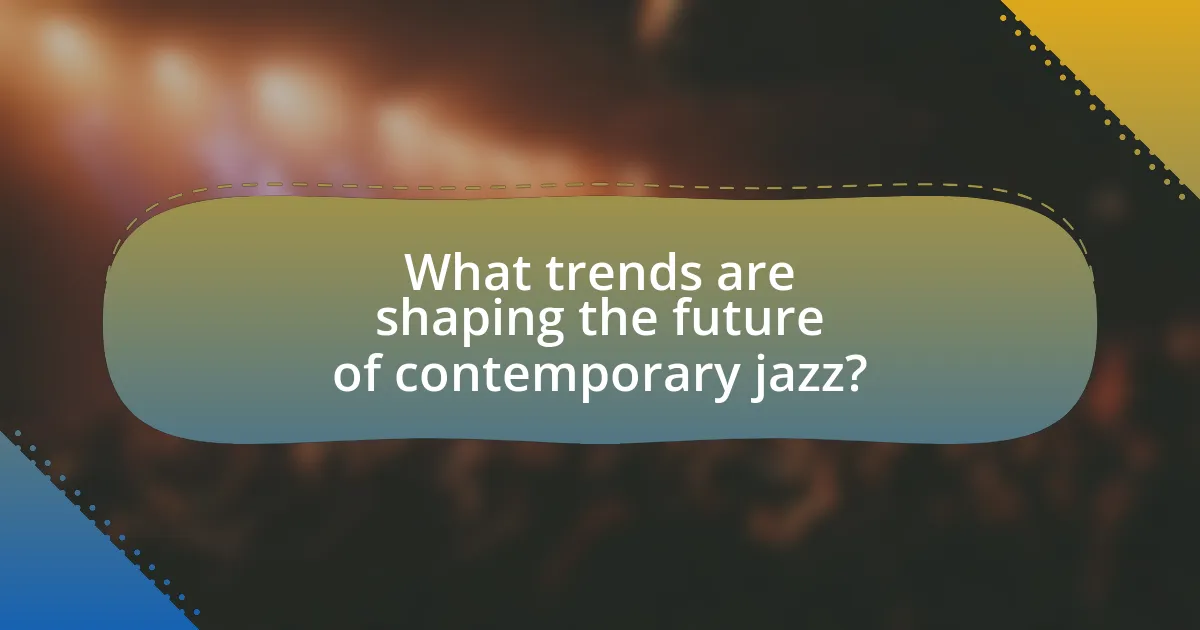
What trends are shaping the future of contemporary jazz?
The future of contemporary jazz is being shaped by the integration of technology, genre-blending, and a focus on social issues. Technology, such as digital streaming platforms and music production software, allows artists to reach wider audiences and experiment with new sounds. Genre-blending, where jazz intersects with hip-hop, electronic music, and world music, creates innovative compositions that attract diverse listeners. Additionally, contemporary jazz musicians are increasingly addressing social issues through their music, reflecting cultural movements and fostering community engagement. This trend is evident in works by artists like Kamasi Washington and Esperanza Spalding, who incorporate themes of identity and activism into their compositions.
How is technology influencing contemporary jazz music?
Technology is significantly influencing contemporary jazz music by enabling new forms of composition, performance, and distribution. Digital audio workstations allow musicians to create complex arrangements and experiment with sound in ways that were previously impossible. For instance, software like Ableton Live and Logic Pro provides tools for layering sounds and manipulating audio, which enhances creative possibilities. Additionally, the rise of streaming platforms such as Spotify and Apple Music has transformed how jazz is consumed, allowing artists to reach global audiences without traditional record label support. This shift has been documented in studies showing that independent artists can achieve substantial success through digital channels, reflecting a democratization of the music industry.
What role do digital platforms play in promoting contemporary jazz?
Digital platforms play a crucial role in promoting contemporary jazz by providing musicians with accessible channels to share their work and connect with audiences. These platforms, such as streaming services, social media, and music-sharing websites, enable artists to distribute their music globally without the need for traditional record labels. For instance, according to a 2021 report by the International Federation of the Phonographic Industry, streaming accounted for 62% of global recorded music revenue, highlighting its significance in music promotion. Additionally, social media platforms allow contemporary jazz musicians to engage directly with fans, fostering a community around their music and increasing visibility through shares and recommendations. This democratization of music distribution and promotion has led to a broader appreciation and understanding of contemporary jazz among diverse audiences.
How are contemporary jazz musicians utilizing technology in their work?
Contemporary jazz musicians are utilizing technology by integrating digital tools for composition, performance, and distribution. They employ software like Ableton Live and Logic Pro for creating complex arrangements and experimenting with sound. Additionally, many musicians use social media platforms and streaming services to reach wider audiences, enhancing their visibility and engagement. The use of MIDI controllers and electronic instruments allows for innovative soundscapes, while online collaboration tools enable musicians to work together remotely, breaking geographical barriers. This technological integration reflects a shift in the jazz genre, allowing for greater creativity and accessibility in the music-making process.
What are the emerging styles within contemporary jazz?
Emerging styles within contemporary jazz include nu-jazz, jazz fusion, and avant-garde jazz. Nu-jazz blends elements of electronic music with traditional jazz, often incorporating improvisation and innovative soundscapes. Jazz fusion combines jazz with other genres such as rock, funk, and R&B, characterized by complex time signatures and virtuosic musicianship. Avant-garde jazz pushes the boundaries of traditional jazz forms, emphasizing experimentation and free improvisation. These styles reflect the genre’s evolution and adaptability, showcasing the influence of technology and cross-genre collaboration in contemporary music.
How do fusion genres impact contemporary jazz?
Fusion genres significantly impact contemporary jazz by introducing diverse musical elements and styles, which expand the genre’s boundaries and appeal. For instance, the integration of rock, funk, and electronic music into jazz has led to innovative sounds and new rhythmic structures, as evidenced by artists like Herbie Hancock and Chick Corea, who have successfully blended these influences in their works. This cross-pollination not only attracts a broader audience but also encourages jazz musicians to experiment with unconventional instruments and production techniques, thereby fostering creativity and evolution within the genre.
What new influences are being integrated into contemporary jazz?
Contemporary jazz is integrating influences from hip-hop, electronic music, and world music. Artists like Kamasi Washington and Robert Glasper blend traditional jazz elements with hip-hop rhythms and electronic sounds, creating a fusion that appeals to a broader audience. The incorporation of diverse cultural sounds, such as Afrobeat and Latin rhythms, further enriches the genre, reflecting a globalized music landscape. This evolution is evidenced by the increasing collaboration between jazz musicians and artists from various genres, showcasing a willingness to experiment and innovate within the jazz framework.
What can aspiring musicians learn from contemporary jazz trends?
Aspiring musicians can learn the importance of innovation and collaboration from contemporary jazz trends. Contemporary jazz emphasizes blending various musical styles, encouraging musicians to experiment with genres such as hip-hop, electronic, and world music. This fusion not only broadens their musical vocabulary but also enhances creativity, as seen in artists like Kamasi Washington, who incorporates elements from different genres into his work. Additionally, contemporary jazz often features collaborative projects, highlighting the value of networking and teamwork in the music industry, as demonstrated by groups like Snarky Puppy, which showcases multiple musicians contributing to a single sound. These trends illustrate that adaptability and openness to new influences are crucial for success in today’s music landscape.

